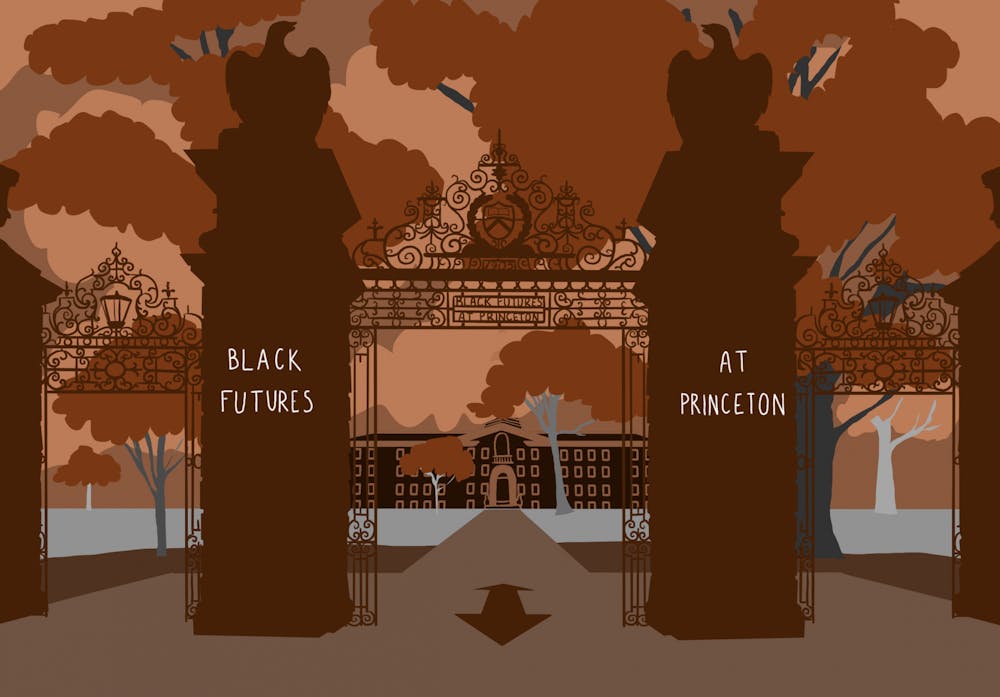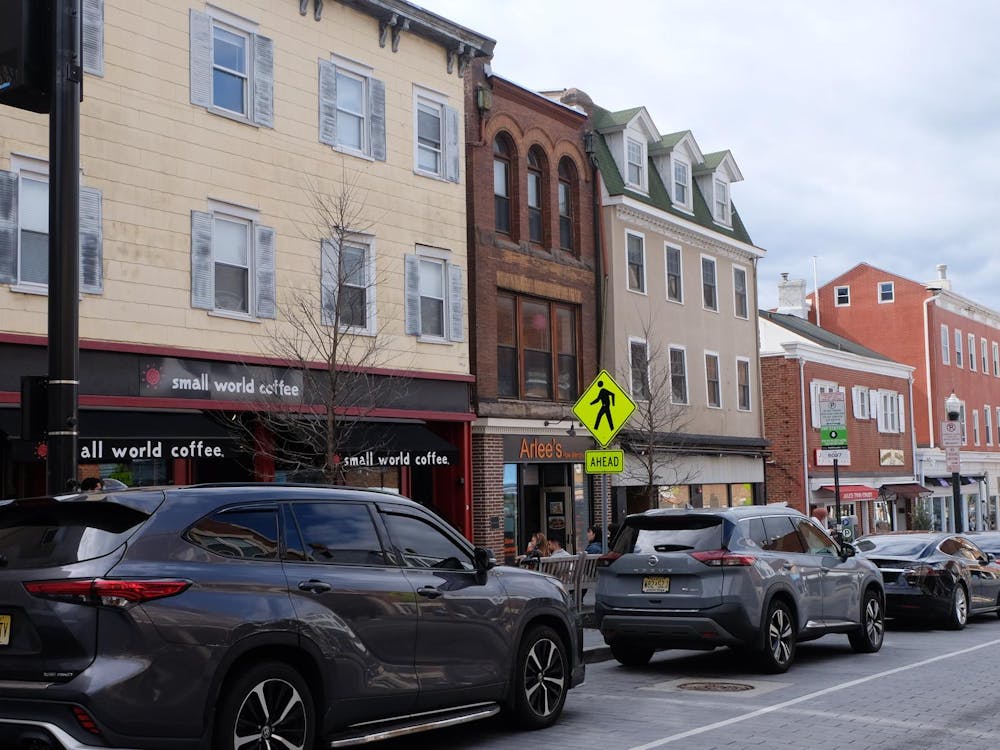This article is part of the Opinion section’s Black Futures at Princeton series. Click here to view the full project.
For years I have tried to put these thoughts to paper. Under cyclical spells of writing, deleting, rewriting, and capitulating, I have tried to verbalize what being biracial means to me. As a young man whose identity comprises both Blackness and whiteness, notions of biracialism constantly flutter around in my mind. And with very little discourse being dedicated to mixed-race identity, my mind is where they have largely stayed.
I, like many others, sometimes wrestle with the conundrum of belonging. It can be easy to feel sequestered between the very affinity groups you are supposed to identify with. For many mixed-race individuals, their identity is defined by how they are perceived. And for many people of Black and white backgrounds specifically, that perception is defined by the former.
I will always cherish and be unapologetically proud of my Blackness at Princeton and beyond. However, that does not always stop me from questioning whether my lack of Blackness causes skepticism in the minds of my Black peers. What has made this dilemma ever more difficult to wrestle with is that I can understand why that would elicit such a response, as I have long grappled with the privileges that come with being biracial as well.
To be clear, I am in no way speaking to the experience of all mixed-race people. That is a growing population that could never be fully captured in a single piece of writing, let alone an op-ed. Nor is this even an exhaustive look at the experiences of biracial people who identify like me. Rather, I simply aim to work through my own experiences by contextualizing them within the history of this country. In doing so, I hope to encourage others to examine their own racial identities and how they have been shaped by the same external forces that continue to bear influence today.
The United States, like countless other countries, is deeply undergirded by colorism. The white gaze dominates our collective ideas of beauty and worth, pigeonholing nonwhite bodies, and convincing those of us who inhabit them that the smaller the deviation from Eurocentric standards, the better.

There was a time when I did not understand the grasp this racist dogma held over my psyche. I did not have the vocabulary to label this toxic behavior. Instead, I would sit in front of my bathroom mirror frustrated that I could not get my hair to lay flat like those around me. Eventually, I just decided to buzz cut it all off in ugly defiance of the beautiful curls that represented such a rich lineage.
No matter how much internalized self-loathing I may have endured at the hands of white supremacy, I would be remiss not to acknowledge the privilege in my experience — a privilege that has been employed throughout history against dark-skinned Black Americans. For while half of my family was forcibly brought to America via the Middle Passage, there will always be the other half that entered through Ellis Island. I cannot ignore what this gilded proximity to whiteness has shielded biracial people like me from throughout history. Indeed, others should not either.
Light-skinned privilege has been cemented over time by academics like Princeton’s seventh president Samuel Stanhope Smith, who, in constructing racial hierarchies, theorized the so-called inferiority of Black and Indigenous communities in relation to Anglo-American society. Smith’s “scholarship” suggested that slavery had corroded African Americans, and the only way to mend the damage was to draw them “culturally and physically” closer to whiteness. It was his scholarship that paved the way for the creation of the American Colonization Society, which sought to relocate African Americans to a colony that they purchased under the auspices of government funding.
Such ideas did not remain isolated to white academia. Thinking along similar precarious lines, the rise of the aristocracy of color—a Black elite that was overwhelmingly biracial—permeated this colorist ideology within the Black community. A case in point can be found in the well known thoughts of W. E. B Du Bois. the Black recipient of a Ph.D. from Harvard. Throughout his long and influential career, his thoughts were largely grounded in the principles of this colorist ideology. A case in point can be found in the well-known thoughts of W.E.B. Du Bois.

A biracial man, Du Bois was the first Black recipient of a Ph.D. from Harvard. Throughout his long and influential career, his thoughts were largely grounded in the principles of the talented tenth. To Du Bois, the Black community could only advance itself if the most abled Black individuals assimilated into the upper echelons of society (which is to say, whiteness). In an attempt to promote this thinking, Du Bois published “The Talented Tenth” in 1903.
However, as historian and author Ibram X. Kendi notes, Du Bois’ “Talented Tenth” essay, which featured the successes of 21 past and present Black leaders of his time, included only one person who was not biracial — formerly enslaved poet Phillis Wheatley.
Although these are but a couple of historical examples, they poignantly demonstrate the broader societal issue of how colorism took root in both white and Black communities.
From the thoughts of Du Bois to the historical practice of the brown paper bag tests, colorism has been effectively used to uplift light-skinned individuals while keeping dark-skinned communities down.
Given that racism continues to plague the American existence, it would be idealistic to claim that we have moved beyond this pattern of behavior. As Princeton Professor LaFleur Stephens-Dougan explains in her book “Race to the Bottom,” President Barack Obama used his biracialism-induced proximity to whiteness to appeal to white voters. And with the recent election of Vice President Kamala Harris, we see that the first Black politicians to hold arguably the most powerful positions in American government come from mixed-race backgrounds.
So while their successes should be celebrated, the question that lurks in the background is: when will Blackness cease to be viewed as deleterious, and when will whiteness cease to be viewed as an asset?
This is a question that must be continually examined. Indeed, as a Princeton community, we need to deeply reconsider the lens through which we ascribe value to life. This is, without a doubt, a formidable task. Colorist thinking from age-old institutions (such as Princeton) have generationally reified structures that center whiteness at the top. If we do not orient ourselves to the occasion of an equitable future, we will only carry on this ugly American tradition.
Thus, I urge everyone to stop and consider the ways in which a person’s complexion has altered your views of them. Brittani Telfair ’22 wrote an incisive piece just last week that explores one arena in which such colorism unfolds: dating. As mentioned in Brittani’s piece, these sentiments can loom in the subconscious, completely eluding awareness from those who espouse them, allowing their dehumanizing consequences to persist. With honest time in introspection, we can begin to dismantle the influence of this sort of hierarchical thinking.
And as for fellow biracial people, it is important to understand that feelings of confusion over our enigmatic identities are valid. However, it is also imperative that we consider the position of privilege from which they emanate. This will help us all recognize the ways that we have benefited — and continue to benefit — from a history dominated by colorism. We can then stop wielding our privilege, whether intentionally or not, against members of our own community and instead fight against the white supremacy that imprisons us all.
For if we ever hope to bridge the chasms that colorism has etched, we all need to openly and intently address its murky past. Only then will we be able to truly reimagine a social landscape free of racist thinking, and thus free from the fetters of light-skin privilege.
Collin Riggins is a first-year student from Kansas City, Mo. He can be reached at riggins@princeton.edu.








